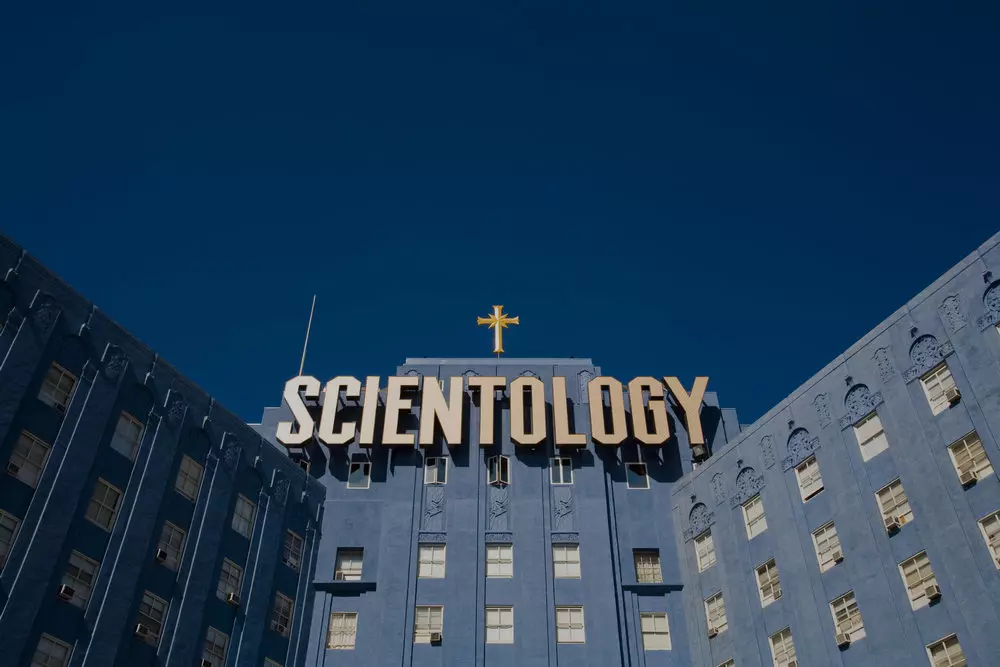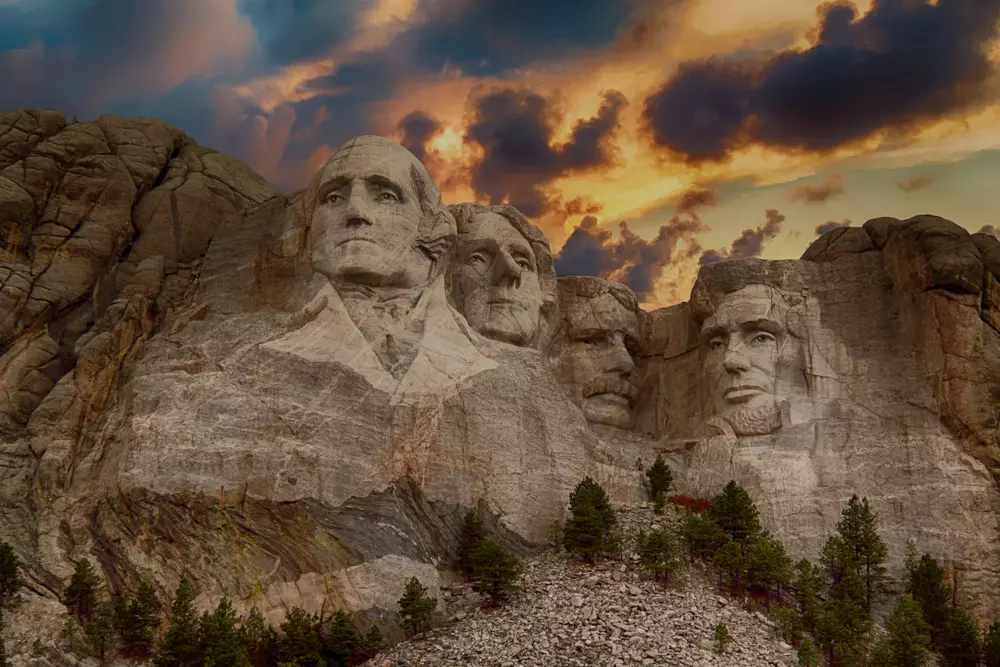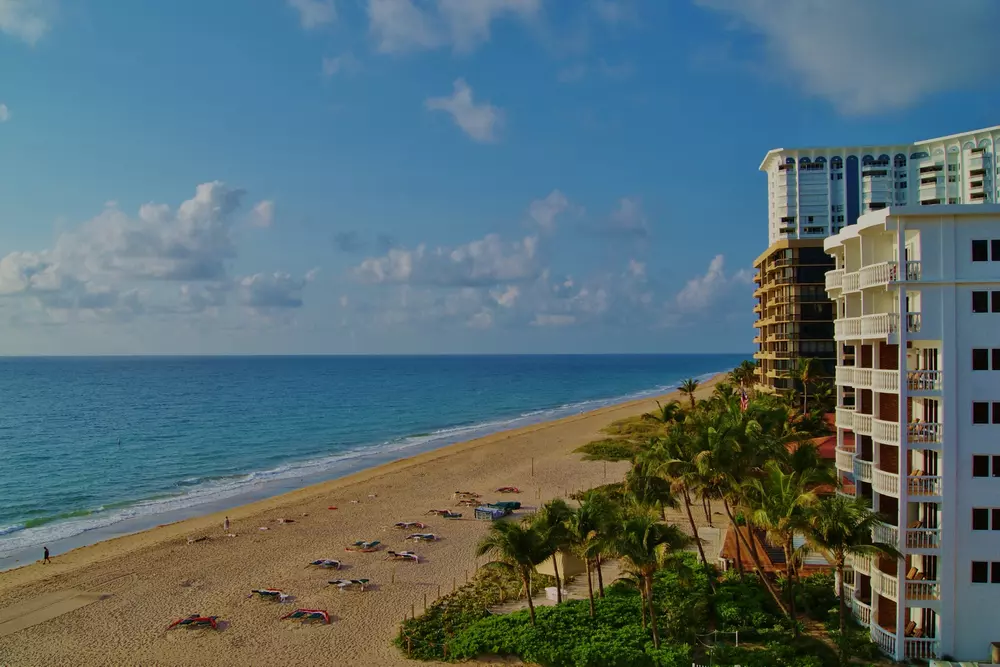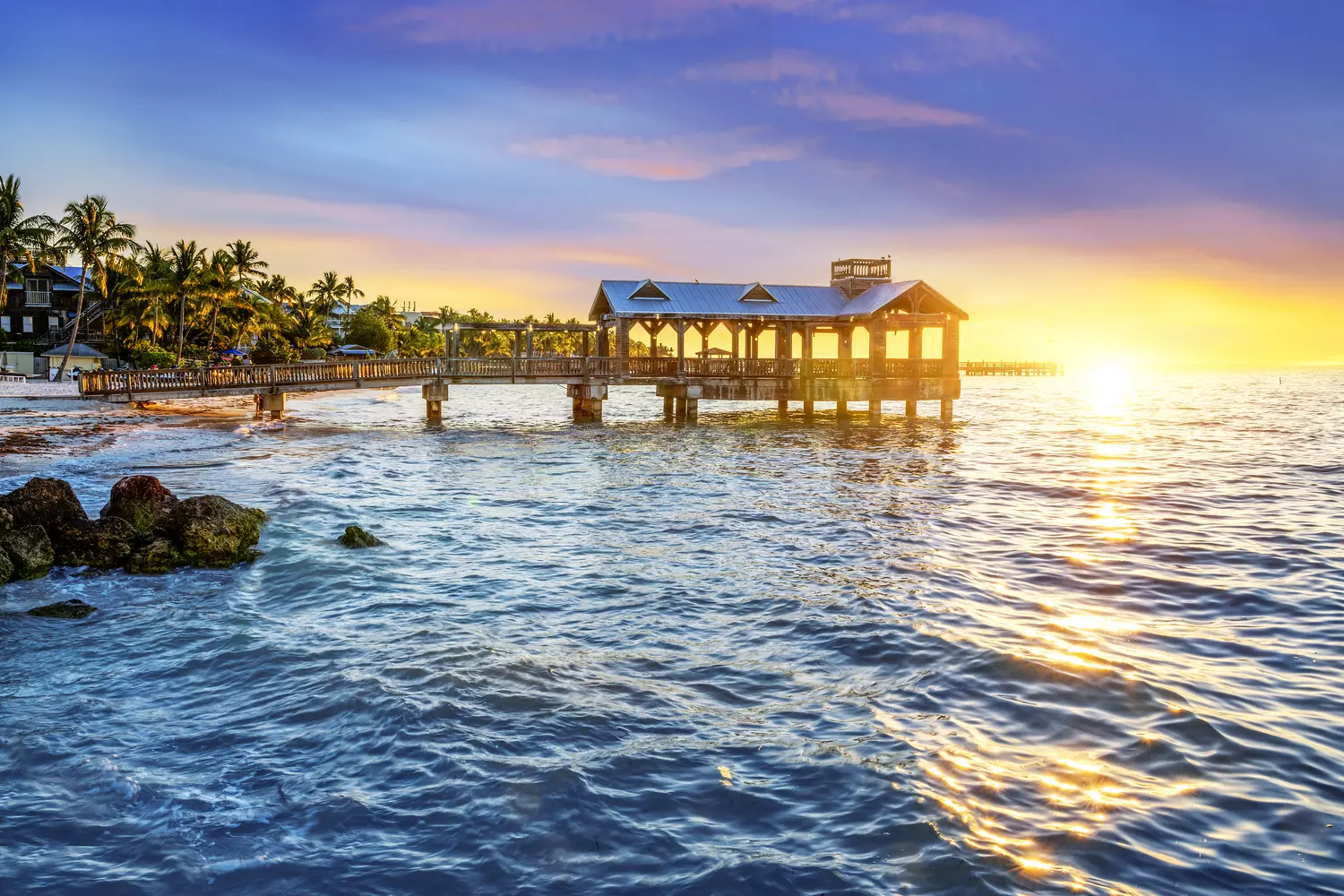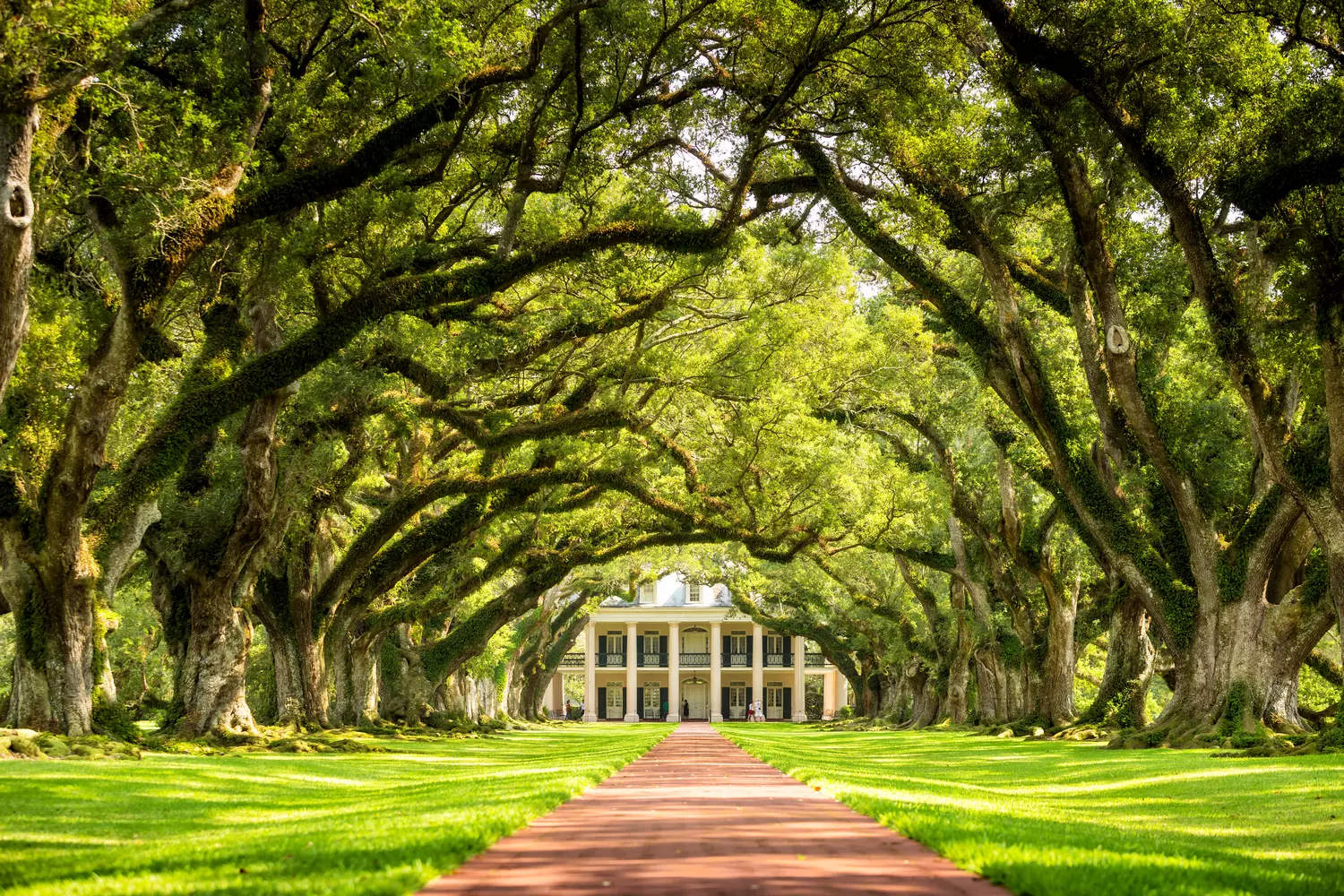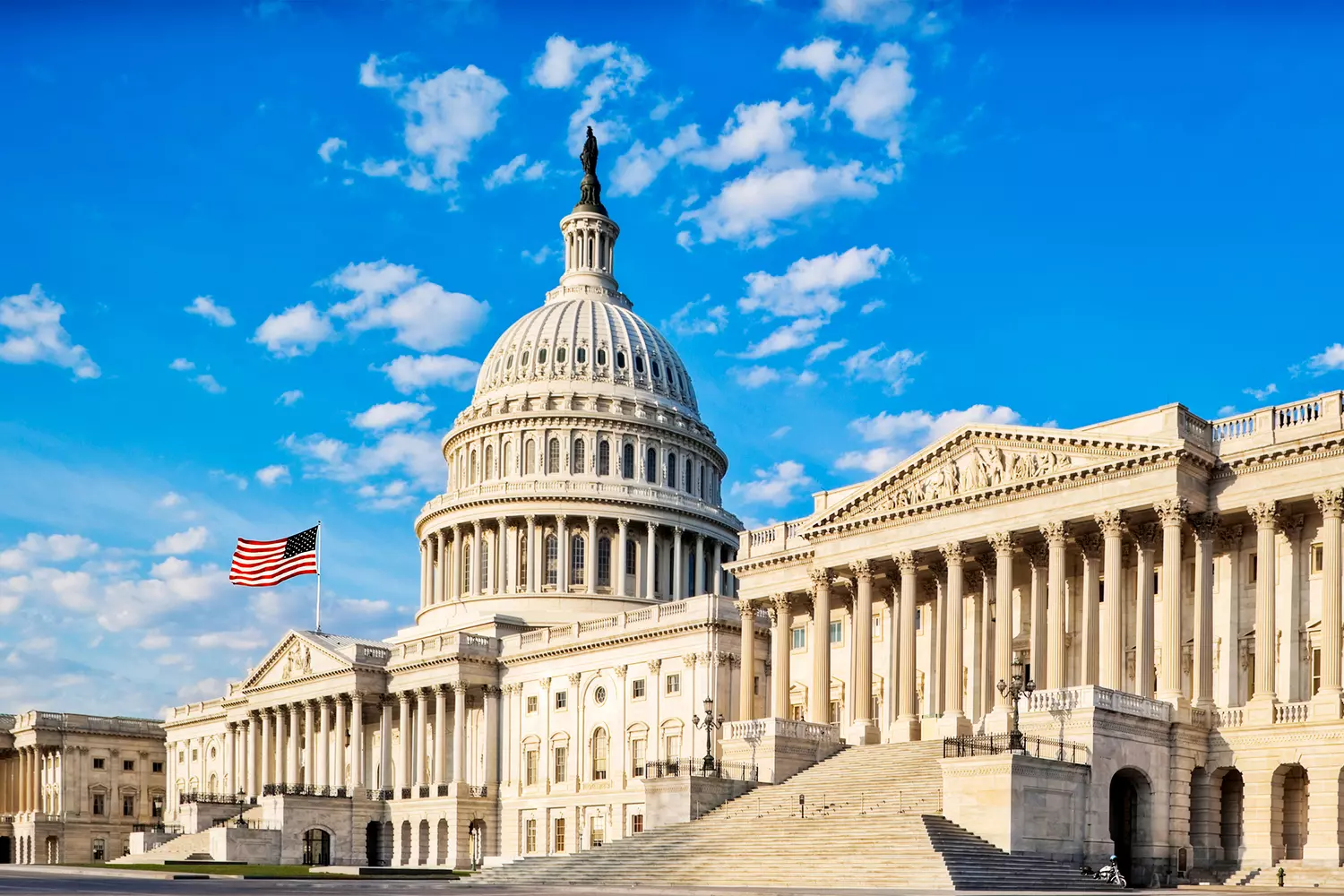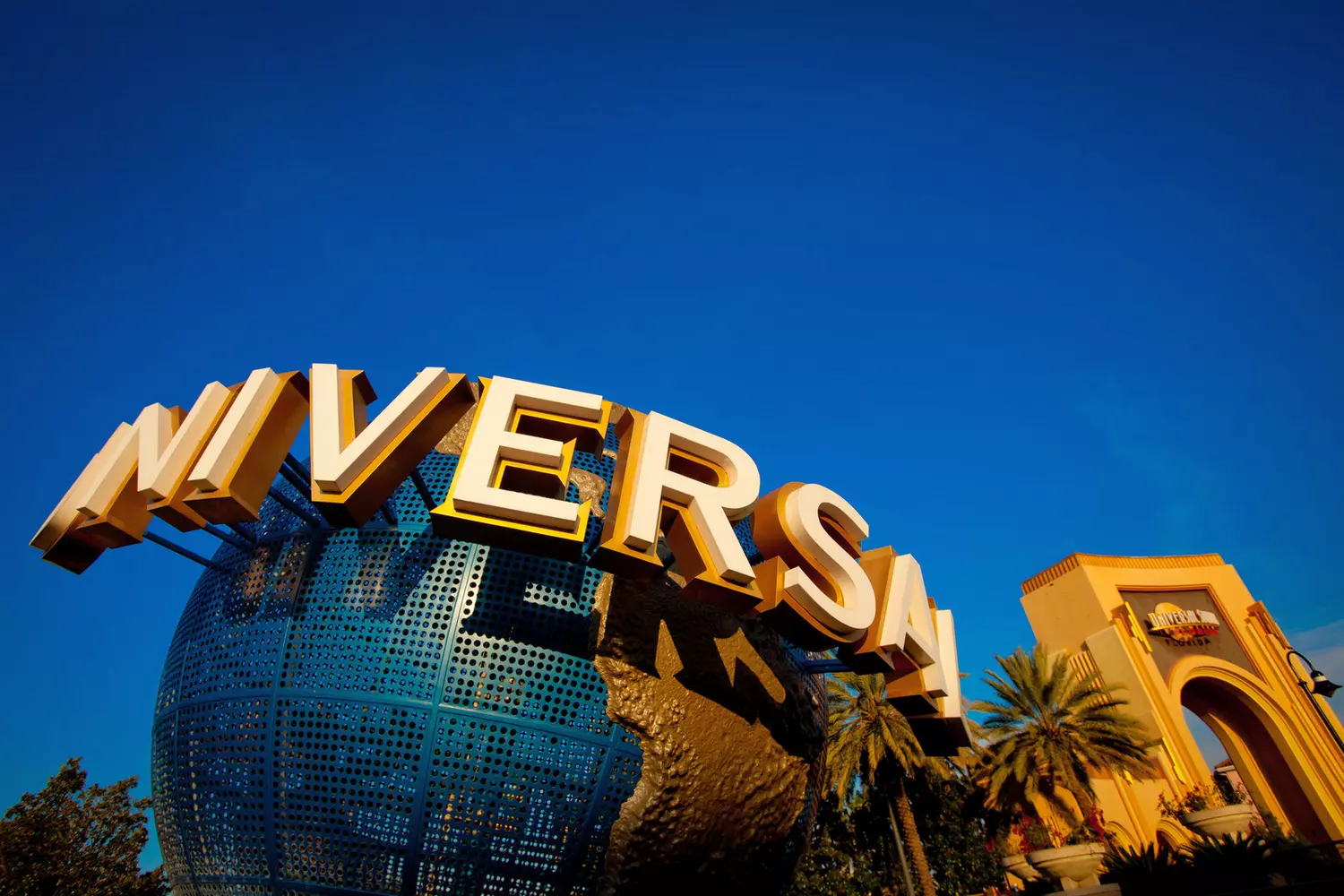Today, we’ll try to understand who the Mormons really are — without myths, assumptions, or sensational headlines. Why do some call them a respectable Christian denomination, while others label them a closed sect? Why does their history resemble an adventure novel full of revelations, flight, persecution, and the founding of their own “City upon a Hill”? Why is their church at once a religious community, an economic empire, and an influential player in American politics?
Spoiler: it’s much more complicated than it seems at first glance.
Mormons are not just a religious movement from the American hinterlands. They represent an entire layer of cultural identity in the USA. These are people who don’t drink coffee but actively engage in business. A nation within a nation, with their own rules, history, and unshakable faith. Their temples are closed to outsiders, yet missionaries in white shirts can be found in nearly every city worldwide. They evoke confusion, admiration, controversy, and curiosity.
This is exactly what we will discuss: how the Mormon doctrine originated, why it still defies simple classification, how it differs from traditional Christianity, and why you should definitely learn more about this culture. Because perhaps it influences you far more than you think.
Ready to look at the Mormons without prejudice? Then let’s go.
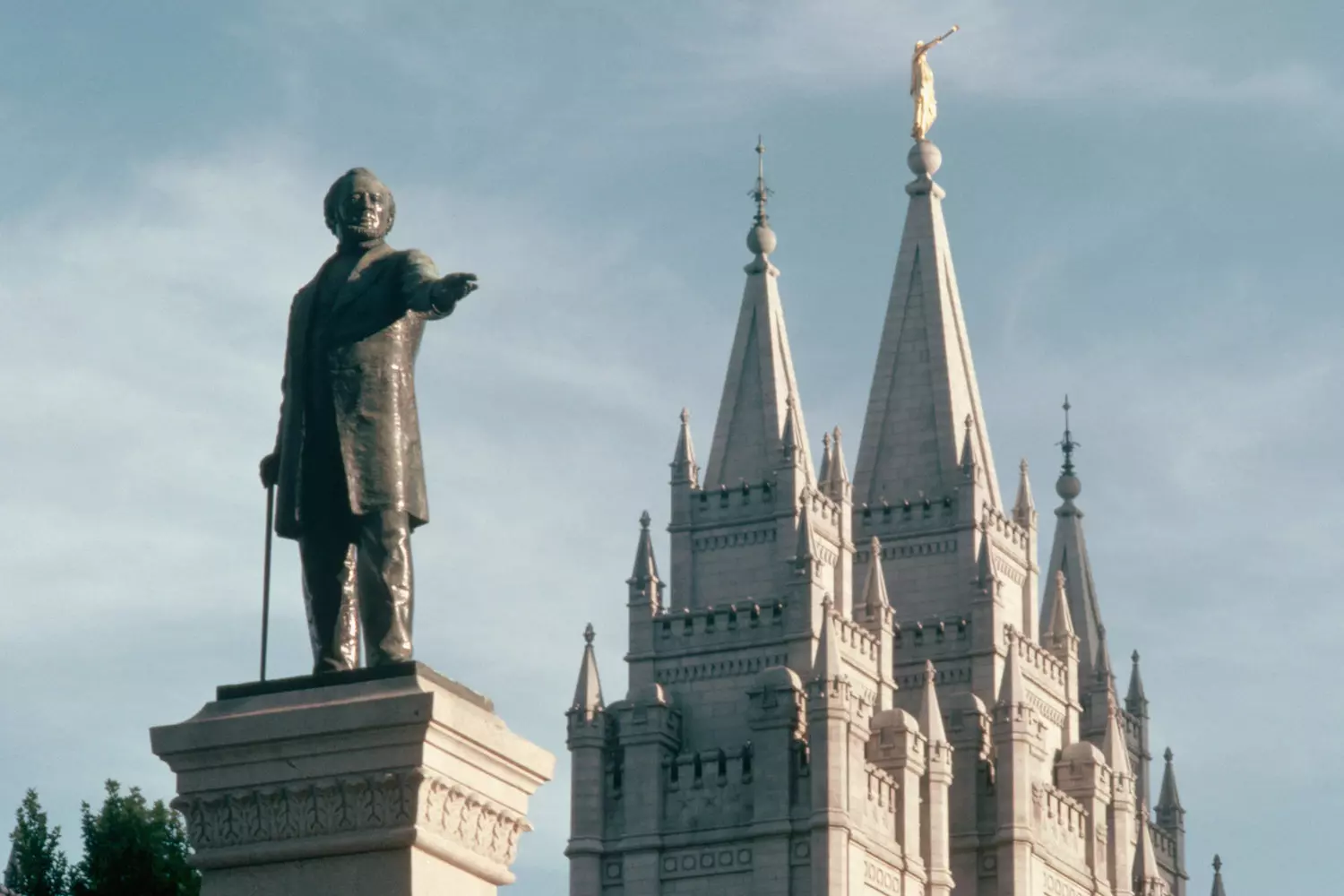
In 2023, the LDS Church officially acknowledged that its investment fund, Ensign Peak Advisors, managed over $100 billion — making it one of the wealthiest religious organizations in the world.
What Is Mormonism: The Essentials Explained
Mormonism is not just another branch of Christianity; it is an independent and deeply distinctive religious movement, officially known as the The Church of Jesus Christ of Latter-day Saints (LDS Church). For some, it is a fully-fledged religion with a unique theology, for others — a closed sect with a strict hierarchy and unconventional worldviews. The truth, as usual, lies somewhere in between.
The Birth of a New Faith: Joseph Smith and the Golden Plates
It all began in the 1820s, in the rural parts of New York, where a young man named Joseph Smith lived. He grew up during a time of religious revival — when America was swept by waves of awakenings, prophecies, new churches, and mass baptismal ceremonies. People were searching for the meaning of life, a faith they could call their own. Joseph, by his own account, pondered this question too and once retreated to the woods to pray — where, he claimed, he was visited by God the Father and Jesus Christ.
But that was only the beginning.
A few years later, Smith said an angel named Moroni appeared to him, showing a secret location where golden plates were supposedly hidden. These plates, according to his story, contained a chronicle of an ancient people who lived on the American continent thousands of years ago. Their language was “reformed Egyptian,” and he could translate them only with the help of special “seer stones” — Urim and Thummim, which were also given to him from above.
This is how the Book of Mormon came into being — the second most important sacred book for Mormons after the Bible.
The Book of Mormon is not just an addition to the Bible. It is a whole religious-historical narrative about peoples who supposedly lived in ancient America and came there from Israel. It tells the story of the prophet Lehi, his son Nephi, the wars between the Nephites and Lamanites, and the appearance of the resurrected Jesus Christ on the American continent.
Mormons consider this book a divine revelation and believe it restored lost truths distorted in traditional Christian denominations.
Mormonism overlaps in many ways with Christianity, but its foundation includes rather unusual doctrines:
- God has a body of flesh and bones
Unlike the abstract, incorporeal God in traditional Christianity. - Man can become God
Mormons teach that everyone can attain “godhood” and divine nature. - Family is eternal
Marriages can be sealed “for eternity,” not just “until death do us part.” - Missionary work is a sacred duty
Young Mormons worldwide go on two-year missions, preaching their faith.
They believe in a living prophet who leads the church today, just like Moses did in his time. And all of this is combined with strict moral discipline: no alcohol, tobacco, caffeine, pornography, premarital sex, and so forth.
Organization and Influence
The Mormon church is built on a hierarchical principle and resembles more a state within a state. At the top is the prophet, who is also the president of the Church. Under him are apostles, bishops, stake presidents (territorial leaders), and so on. Everything is strict, disciplined, and… very efficient.
The Church controls assets worth billions: from charitable foundations and schools to agricultural lands, media holdings, and even dairy production. Its headquarters is in Salt Lake City, Utah, which historically became the center of Mormon civilization.
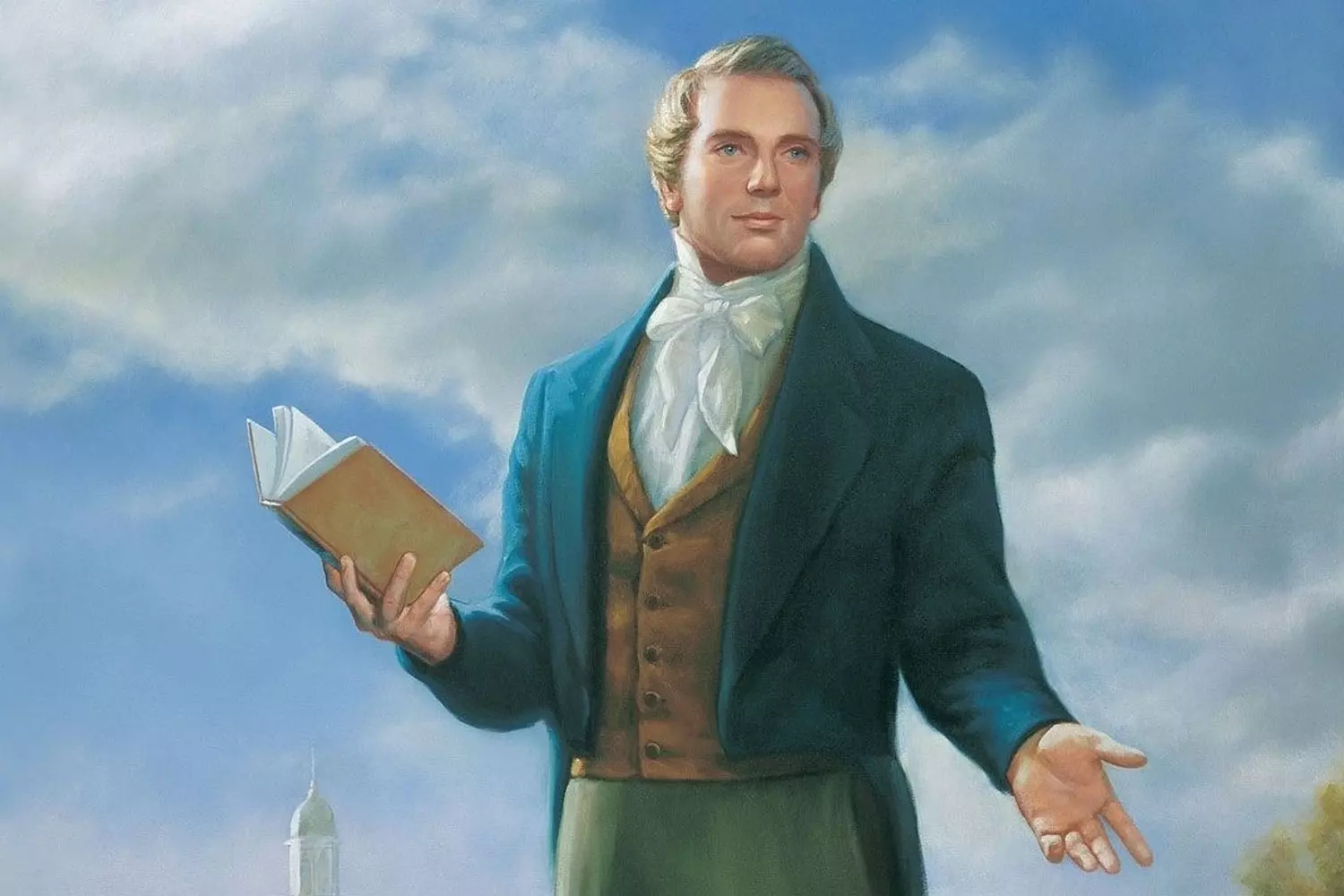
Origins of Mormonism: America, Gold, and Prophets
Mormonism, as a religious phenomenon, did not emerge in a desert nor amid stone tablets. It was born deep in the heart of the American hinterland — against the backdrop of religious fervor, economic hopes, and mounting social changes. This story began not merely as a spiritual quest — it began as a true American prophecy, full of drama, wanderings, persecutions, and ultimately, triumph.
The 1820s in the United States were the era of the Second Great Awakening. Across the country, especially in the northeastern states, mass evangelical gatherings took place where thousands “turned to Christ” and sought a new understanding of the Bible. It was into this atmosphere that Joseph Smith was born and emerged, who in 1830 founded the Church of Christ, later renamed the Church of Jesus Christ of Latter-day Saints. At first glance — just another denomination, but it quickly grew and began to appear dangerous to outsiders. Rumors about “golden plates,” “a new prophet,” “a new Bible,” and “strange rituals” sparked fear.
The first Mormon meeting was held in Fayette, New York, but within a few years they were forced to leave their homeland. They were accused of heresy, fraud, and even counterfeiting (due to Smith’s interest in treasures and mines). Persecutions grew increasingly severe.
The following years became a true odyssey for the Mormons:
- Kirtland, Ohio
The first Mormon religious center. There they built the first temple, developed their community, but soon financial troubles arose connected with Smith’s banking activities. He was accused of fraud. - Missouri
Here the Mormons faced especially brutal attacks. In 1838, the state governor issued the "Extermination Order," effectively declaring them enemies of the state. It was, in fact, an official decree to destroy them. - Nauvoo, Illinois
A new refuge where the Mormons built one of the largest cities in the state, created their own militia, and even prepared for political influence. Joseph Smith ran for president of the United States.
But everything came to an end in 1844. Joseph Smith and his brother Hyrum were arrested and imprisoned in Carthage, Illinois. An armed mob stormed the jail and both were killed on the spot. For the Mormons, this was a tragedy, but not the end. On the contrary — the beginning of a legend.
After Smith’s death, a schism began: some followers rallied behind his son, others followed a new leader named Brigham Young. It was Young who organized one of the greatest religious migrations in American history: the Mormons headed west in search of land where they would no longer be persecuted.
In 1847, after a difficult journey across plains, mountains, and deserts, the Mormons arrived in what was then Mexican territory — today’s state of Utah. Brigham Young is said to have declared: "This is the place," and here began the building of a new city — Salt Lake City.
The city was built from scratch, modeled on Mormon order. The center became the Salt Lake Temple — one of the religion’s symbols. The Mormons cultivated the land, built homes, founded universities, and social institutions. Here they finally gained the long-awaited autonomy and peace — albeit temporarily.
Interesting fact: The Mormon journey to Utah covered over 2,000 kilometers, and many traveled it on foot, pushing wooden wagons with their belongings. This migration is often compared to the biblical Exodus of the Jews from Egypt.
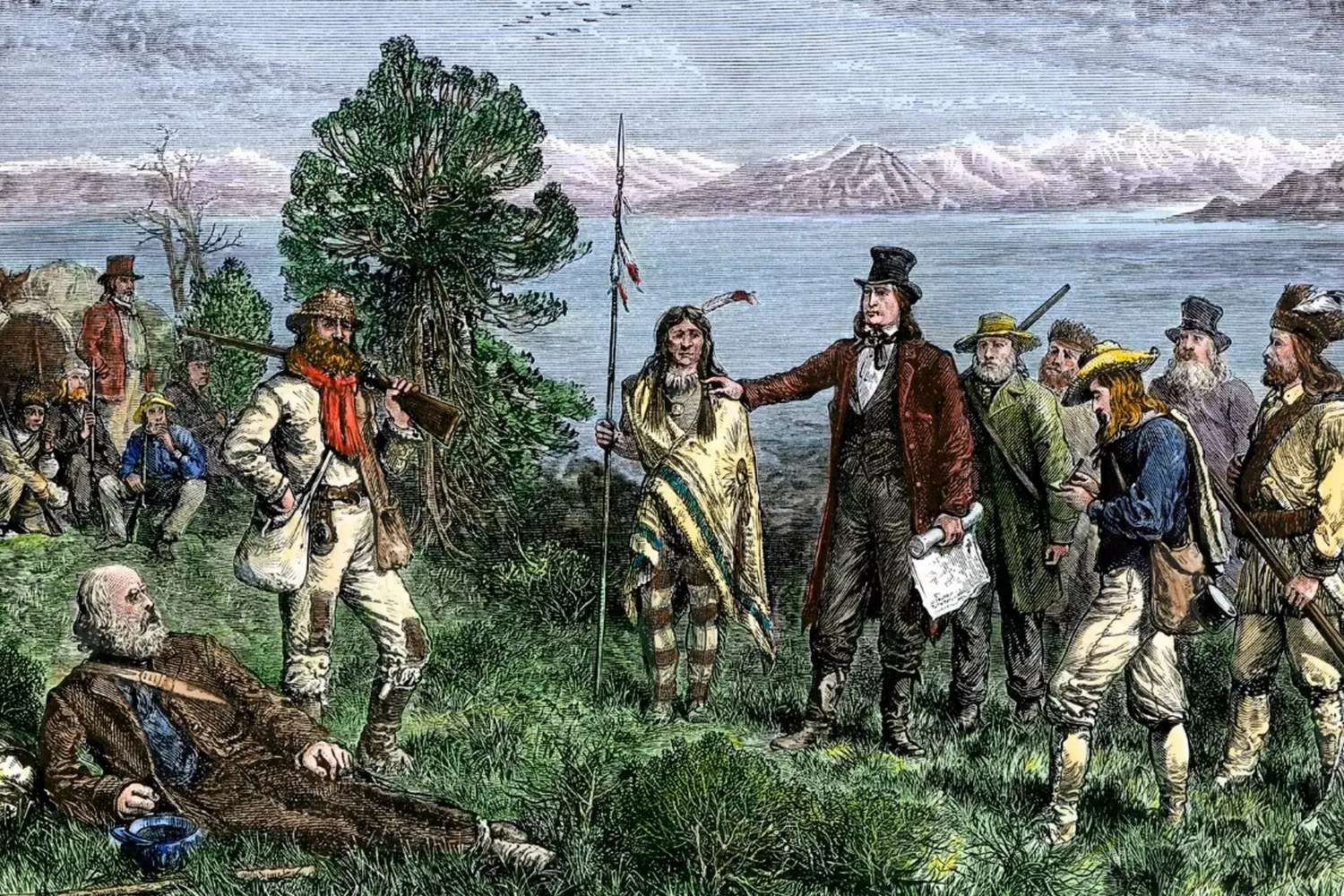
Faith and Practice: What Makes Mormons Who They Are
If you were to describe the Mormon faith in one word, it would be “commitment.” Not just Sunday belief, not merely formal rituals — but a full, daily immersion into the spiritual and social fabric of the community. A Mormon is not a nominal believer. They are someone whose religion defines their lifestyle, social circle, child-rearing approach, and even future career steps.
And it all begins with what Mormons believe.
- 01. Faith in Jesus Christ — but outside the Trinity
Yes, Mormons consider themselves Christians. They believe Jesus Christ is the Son of God and the Savior of humanity, who died for the sins of people. But here is the nuance: they do not believe in the classical Christian doctrine of the Trinity. God the Father, Jesus Christ, and the Holy Spirit are three distinct beings, not a triune God. Moreover, they envision God the Father as a majestic, physical man possessing a body and form, rather than an abstract spirit. To traditional Christians, this sounds like heresy, but to Mormons, it is a return to the original, “pure” faith of the apostles’ times. - 02. Prophets exist today
One of the key principles of Mormonism is continuing revelation. Joseph Smith was the first prophet of modern times, but not the last. The Church is always led by a living prophet, chosen from among the elders of the Council of the Twelve Apostles. This person is considered a direct intermediary between God and people, and his word is almost like a new covenant. Belief in a living prophet means that doctrine can develop. For example, the church eventually abandoned polygamy and changed its stance toward people of other races. - 03. Sacred books: not only the Bible
Mormons read the Bible (mostly the English King James Version) but consider it insufficient. The main addition is the Book of Mormon, supposedly translated by Joseph Smith from golden plates. It is not just “another book” — it is the second pillar of faith, telling the story of ancient American peoples, their encounter with Christ, and their fall through sin. Besides it, two more texts are canonical:
- Doctrine and Covenants
Revelations given to Smith and other prophets, - Pearl of Great Price
A collection of theological texts and the prophet’s autobiography.
- 04. Personal improvement and morality
Mormon ethics are strict, almost ascetic. For them, faith is not just philosophy but a daily work on oneself: honesty, diligence, chastity, rejection of bad habits, and high family discipline. Special attention is paid to self-control and purity of thought, because the body, in their belief, is a temple of the spirit. - 05. Mandatory tithing
Every Mormon is required to give 10% of their income to the church. This is not a voluntary donation but an obligation. The money goes not only to temples but also to humanitarian missions, education, and helping those in need. The Mormon system of aid to the poor is one of the most developed among religious organizations in the USA.
What Mormons Practice
Now about practice. Everything above is theology. But how does a Mormon live in reality?
- 01. Family values and “sealing” marriage in the temple
Family for a Mormon is a sacred institution. They do not just marry and have children. They believe the family can exist eternally if the marriage is “sealed” in the temple by a special ordinance. This means husband and wife will remain together even after death — literally.
Children born into such a family automatically enter into this eternal covenant. Those who joined the faith later can “reseal” their union by going through temple ordinances again. - 02. Prohibitions: coffee, alcohol, tobacco, and even tea
Mormons strictly follow the so-called “Word of Wisdom” — a revelation received by Joseph Smith. According to it, alcohol, tobacco, drugs, coffee, and black tea are forbidden due to caffeine and “harmful” properties. Interestingly, caffeinated sodas (like Coca-Cola) are not officially banned but were long avoided. Only recently have Mormon campuses started selling Coca-Cola again. Proper nutrition (lots of vegetables, moderation in meat), regular physical activity, and caring for the body as a temple are also encouraged. - 03. Sunday meetings and everyday life
Every Sunday, Mormons attend a three-hour service. It’s not just a mass like in other churches. It is more like a system of spiritual classes: a general meeting (the Lord’s Supper), age- and gender-specific classes, scripture discussions, and lessons.
The rest of the week is also filled with church activities: volunteering, meetings, helping neighbors, planning events. Mormons are one of the most engaged and united communities in the USA.
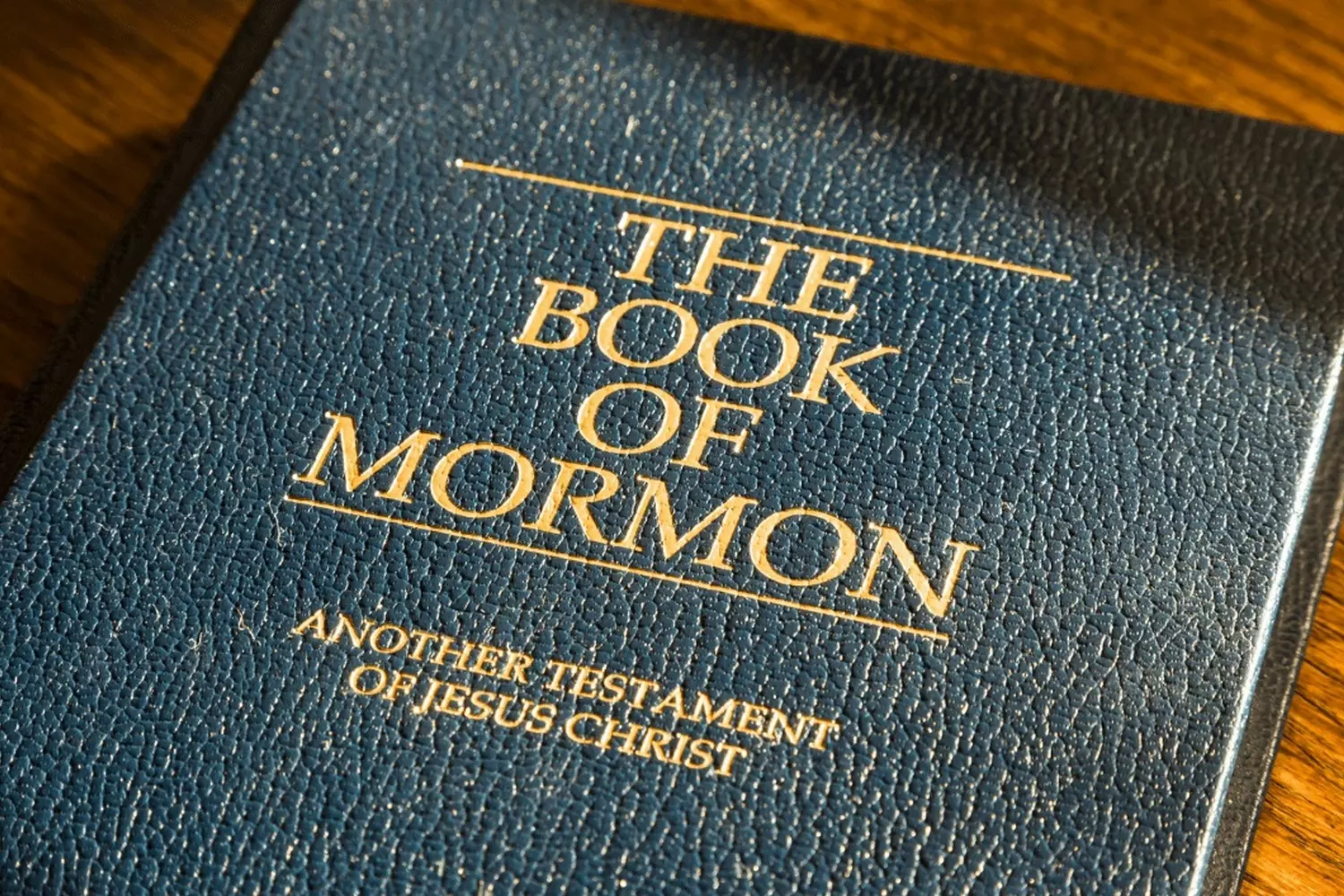
Life of Mormons: Traditions, Rules, and Everyday Surprises
The world of the Mormons is rhythm, habit, and purpose. Every day here is carefully planned in advance, like a rehearsal for eternity. There is something Buddhist about it — only instead of a solitary cell, the whole life unfolds in front of the community.
The daily life of a Mormon family is not an endless race, but a cycle of work, prayer, and service. Morning begins with family prayer, sometimes even with singing together. Then comes school or work, and in the evening — lessons, meetings, barbecues, charity, or spiritual discussions. And so — every day, without chaos or rush.
“We plan not for control, but for harmony” — Mormon parents often say.
Clothing as a reflection of the inner world
For Mormons, appearance is not about fashion but about respect: for oneself, others, and God. Their clothing is modest, yet not dull — rather restrained elegance.
- Men wear shirts, dark pants, sometimes ties — even outside the office.
- Women prefer dresses below the knee, with sleeves at least to the elbow. Makeup is allowed, but moderate.
And this is not imposed from above. It is part of the culture, like with the Japanese — no one says it openly, but everyone understands: dressing provocatively means putting the whole family at risk.
Interestingly, Mormons have the concept of a “garment” — special underwear consecrated after the temple ceremony. It is worn only by dedicated adults and symbolizes purity and faithfulness to the covenant.
Transitions, rituals, and growing up
Mormon life is rich with transitional stages — with clear symbolism and rituals. For example:
- At 8 years old, a child undergoes baptism — a conscious choice (not done with infants).
- At 12 years old, boys receive their first church responsibility: becoming deacons.
- At 19–20 years old — the mission: two years of preaching anywhere in the world.
Missionaries are a symbol of Mormonism. Black suit, name badge, and endless doors: they knock not to pressure, but to share — their sincerity often disarms. Girls also go on missions, but their mission usually lasts 18 months.
“The mission is not just a religious experience, it is a school of humanity, responsibility, and discipline” — say those who have returned.
Home education: school under the temple roof
Although Mormons respect regular schools and colleges, more and more families choose homeschooling — educating children at home. This is not a sign of closed-mindedness, but a desire to control values. Education includes: standard school curriculum, daily Scripture reading, history lessons through the lens of faith, mandatory service, and handicrafts.
Some teenagers even combine homeschooling with BYU online college (the Church’s university in Utah) — so they get a diploma faster and cheaper.
Yes, Mormons have smartphones. But no TikTok.
Yes, they have the internet. But with filters.
Yes, they can blog, but without self-promotion and toxic content.
On average, families use: family messengers, shared calendars, religious apps with spiritual podcasts, content filtering programs for children and teens.
The principle is simple: technology is not the enemy, but a tool. The question is only who controls it. Even games are allowed — if they are non-violent and educational. Minecraft, strategy simulators, language games — popular. Fortnite? No, thanks.
What they read, how they speak, and why they don’t swear
Mormons carefully watch what and how they speak. Rudeness is taboo. This applies not only to public speaking but also to family communication. Forbidden are:
- Swearing (including “veiled” swearing)
- Mockery, irony about others’ faith
- Discussing others’ sins.
Instead, encouraged are:
- “I-statements” (without accusations)
- Scripture quotes in conversation
- Politeness even in disagreement.
What they read: classics — Austen, Tolstoy, Dickens; popular science — especially about history and philosophy; contemporary prose without violence and depravity; their own literature — Mormon authors have created a large cultural layer (including fantasy and sci-fi).
The most famous Mormon writer? Brandon Sanderson — author of fantasy bestsellers read worldwide. And yes, he teaches writing at the Mormon university BYU.
A life without luxury: the principle of modest sufficiency
Mormons are not poor. But they don’t flaunt wealth. Luxury is a sin not by money, but by intent.
- Homes — simple but neat.
- Cars — family-sized, spacious.
- Interiors — IKEA style, but without flashy trends.
Every purchase passes through an inner filter: “Does my family need this or is it for my ego?”
And most importantly — Mormons know how to live within their means. Even wealthy families mostly avoid loans, invest in children’s education and community help.
Alcohol-free holidays: how Mormons have fun
Surprisingly, Mormons know how to have fun without alcohol. Their holidays are a mix of modest entertainment, family rituals, and large-scale events. Main holidays:
- 01. Easter and Christmas
Celebrated with a special focus on spirituality. Less Santa Claus, more Bible scenes, family readings, and volunteering. - 02. Pioneer Day
July 24 in Utah. Dedicated to Mormon pioneers who crossed deserts and mountains in search of a new home. Like Thanksgiving with parades, concerts, and 19th-century costumes. - 03. Family Night
Monday. Yes, every week. On this day, families do not work or visit others — they spend time together: playing, cooking, discussing Scripture.
And yes, there is plenty of food at all holidays — without alcohol, but with cakes, casseroles, and the legendary Mormon “Jell-O salad”.
Youth camps: scouting, campfires, and Scripture
Summer for Mormon youth is not about festivals with DJs, but camps with tents and prayers.
There are two types of camps:
- 01. Young Men’s and Young Women’s Camps
Teen gatherings organized by the church. The youth learn cooking, sewing, map reading, teamwork, and... preaching. - 02. Trek Camps
Reenactment of the first Mormons’ migration. Teens wear 19th-century clothes and pull wooden wagons across fields — just like their ancestors did.
Sounds wild? In reality, it builds character, teaches humility, and creates strong bonds. Such camps are not just rest, but a school of life. And evenings by the fire — guitar, spiritual talks, stories, hugs, and tears. No phones, but real emotions.
Missionaries’ daily life: living in a black suit
Every Mormon young man aged 18 to 25 years goes on a mission. This is not a vacation — it is 2 years of service. For women — 18 months. Here is how it looks:
- The day starts at 6:30 AM. Prayer, breakfast, study.
- From 10 AM — house visits, preaching, meetings, language learning.
- In the evening — report, call home (once a week), Scripture study.
Missionaries can be found in 150+ countries. They live in pairs, follow strict ethics: no movies, no entertainment music, no dating. They are sent wherever needed. Some go to Japan, others to Argentina. They don’t choose — they believe “God decides.”
A system without violence, control without fear, discipline without punishment. That is the strength of the Mormons. They build life around service and family, but do not reject progress. They do not isolate from the world, but create their own filters. This is a living, self-regulating society inside America, where the future is not only predicted — it is nurtured from the cradle.
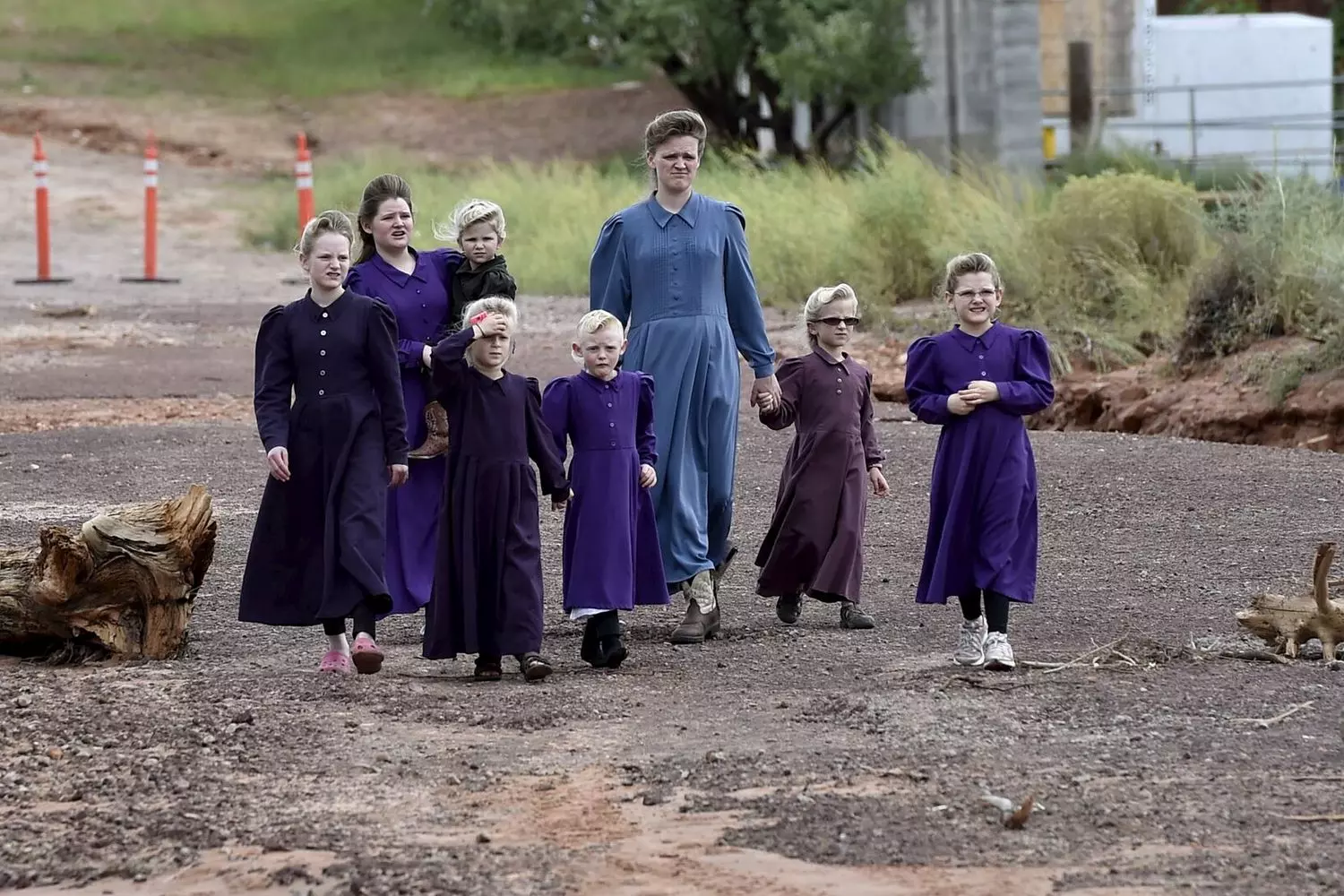
Scientology: Salvation or Scam?
How Mormons Differ from Traditional Christians
From the outside, it seems that Mormons are just like other Christians — only wearing suits and badges. But if you dig deeper, the differences become fundamental. They have their own theology, life goals, and rituals. Below is a detailed breakdown of the five main distinctions.
- 01. God and Jesus are not the same
In traditional Christianity, the central doctrine is the Trinity: God the Father, the Son (Jesus Christ), and the Holy Spirit — united in essence, though distinct in persons. For Mormons, it's different. They believe that God the Father, Jesus Christ, and the Holy Spirit are three separate beings. Physically and literally.
- God the Father — has a body of flesh and bones, glorified and immortal.
- Jesus Christ — His Son, also with a body, who came to earth, died, and resurrected.
- The Holy Spirit — immaterial but a separate person.
This may seem heretical to Catholics and Protestants. But for Mormons, this is not just a terminological difference, but a key philosophical tenet: God is a person to whom one can aspire to become like.
- 02. Not one book, but a whole library of revelations
The Bible is important to Mormons but not the only source of truth. They recognize three additional sacred texts:
- The Book of Mormon
Like a second Bible, telling about ancient prophets on the American continent. - Doctrine and Covenants
A collection of modern revelations given to Joseph Smith and his successors. - The Pearl of Great Price
Includes personal visions and texts, for example, the "Book of Abraham."
- 03. The purpose of life is to become like God
Christians seek salvation and eternal life with God. Mormons go further. They teach that a person can become godlike — not in pride, but as the result of spiritual growth. This concept is called exaltation. It includes achieving spiritual maturity, building an eternal family, and eternal life in the highest degree of God's Kingdom. According to Mormon teaching, God was once mortal. Therefore, a person can follow the same path. It sounds almost like spiritual evolution. - 04. Baptism for the dead
Mormons believe that salvation is possible even after death. That’s why they perform baptisms on behalf of the deceased in temples. How it works:
- A living person (often a teenager) is immersed in water in a temple, pronouncing the name of the deceased.
- Thus, the soul of the deceased receives the opportunity to accept Christ — in the spirit world.
For Mormons, this is an act of love and compassion. For traditional churches, it is a strange and theologically unacceptable ritual.
- 05. Temple rituals are only for the "worthy"
In traditional churches, services are open to everyone. Mormons have two levels of church life:
- Ward life
Open: Sunday services, meetings, music. - Temple ordinances
Only for members who have passed a special interview and have a "recommendation."
What happens in temples: sealings — marriages eternal, not just until death; endowment — a dedication granting "spiritual knowledge and power," dressing in white garments, covenants, symbolic actions.
Temples are not for tourists. Not all Mormons are admitted — only those who live by strict moral standards. This puzzles outsiders, but for Mormons, the temple is like the Old Testament Holy of Holies: a place between man and eternity.
- 06. The main difference is scale
Christians seek to enter heaven. Mormons seek to become worthy to create their own world in eternity, with family, in glory and power. They believe God is not an abstract force, but literally a Father. And every person is His child, capable of incredible growth. In this worldview — there is more cosmos, more future, more responsibility.
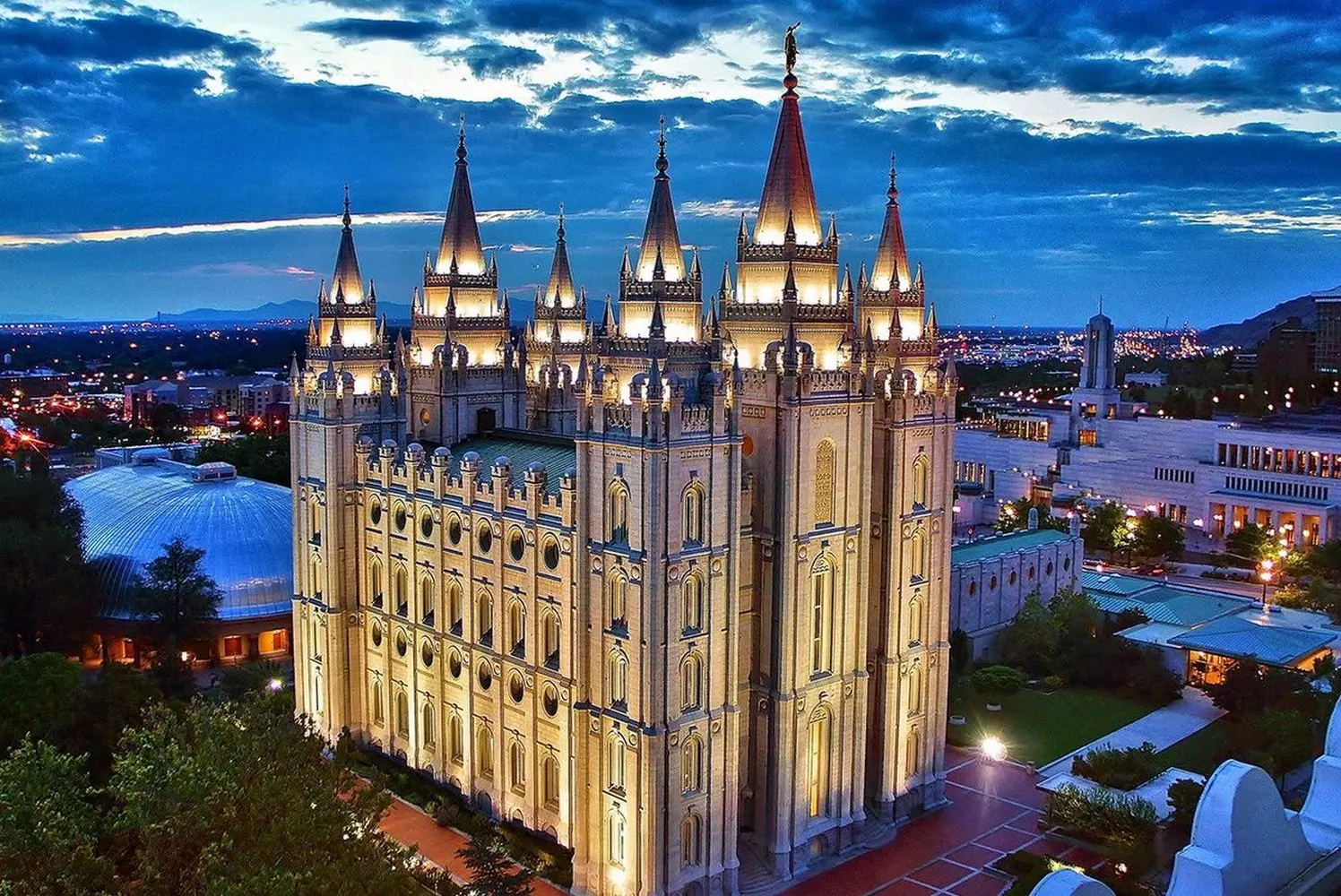
Mormon Society Today
If you think Mormons are just guys in white shirts on bicycles rushing through suburbs, it’s time to look at the map and the statistics. In the 21st century, the Mormon community has grown into a major global force — religious, economic, cultural, and even political.
- 01. Numbers: how many there are and where they live
As of 2024, the number of followers of The Church of Jesus Christ of Latter-day Saints (that’s the official name of the Mormon church) has exceeded 16 million people worldwide. And although the movement originated in the United States, today its reach is much more global. The distribution of believers:
- USA — about 6.7 million Mormons. This is the largest national community. The states with the densest populations are: Utah — over 60% of the population, Idaho, Nevada, Arizona, Wyoming — strong regional centers.
- Latin America — huge growth: Mexico — over 1.5 million followers, Brazil, Chile, Peru — each with hundreds of thousands of believers.
- The Philippines — one of the fastest-growing communities outside America.
- Africa — especially in Nigeria, South Africa, and Ghana there is rapid growth of churches and missions.
- 02. Education, universities, and intellectual influence
The flagship educational institution of the Mormons is Brigham Young University (BYU) in Utah. One of the largest private universities in the USA. Important points:
- At BYU, alcohol, drugs, and even caffeine are prohibited.
- There is an almost monastic code of honor.
- Yet it consistently ranks in the TOP-100 US universities, and its business, linguistics, and engineering faculties are highly sought after.
- Tuition is relatively affordable, especially for Church members.
BYU is an elite but strict institution. It trains future lawyers, diplomats, engineers, and economists who later play significant roles in American life.
- 03. Charity and self-help
The Mormon church builds its system as an internal ecosystem of support. It provides:
- Warehouses with food, clothing, and essential goods for those in need. Yes, real warehouses, like from times of crises.
- The “Welfare Services” program, which helps the unemployed, single mothers, and people in difficult life situations.
- Training in crafts, help with employment, personal finances, and nutrition.
Young Mormons are no longer just about morning prayers and farm work. They:
- Are active on TikTok, Instagram, YouTube.
- Launch startups and work in Silicon Valley.
- Travel abroad, learn languages, and are open to intercultural dialogue.
The Church is also adapting its policies: it has become more open on racial integration, gender equality (though with some reservations), and ecology.
Business the Mormon way: honesty, hard work, and mutual help
Mormons are incredibly successful in business. Not because they’re lucky, but because they work hard, help each other, and run their businesses transparently. The principles:
- Never deceive the customer.
- Respect every employee.
- Pay tithing from profits.
- Remember that business is also a form of service.
Interesting examples:
- Marriott International — the world’s largest hotel chain. Founded by the Mormon Marriott family. Even today, Bibles and the Book of Mormon lie in the rooms.
- JetBlue Airways — its founder David Neeleman is a Mormon who introduced the concept of “humane aviation” (comfortable seats, free snacks, politeness).
- Deseret Industries — similar to Goodwill, a network of charity stores where people with difficult life stories work and receive training.
Mormons even have their own business mentorship and employment assistance system for church members called “Priesthood Employment Services.”
Mormon media: television without scandals
The Mormon world is not a monastery, but it’s not Hollywood either. They consume media, but under control. And it’s not just about filters — the Church has its own media outlets and even film studios. What Mormons create themselves:
- BYUtv
A TV channel run by Brigham Young University. No ads for alcohol or violence, but plenty of series, documentaries, and shows about science and sports. - Lifestyle series
For example, the show “Studio C” — a humorous program with millions of views on YouTube. Jokes without swearing, politics off-screen — and still genuinely funny. - Faith films
Mormons produce movies. Example — the film "The Other Side of Heaven" (2001) starring Anne Hathaway. It tells the story of a real missionary on the islands of Tonga.
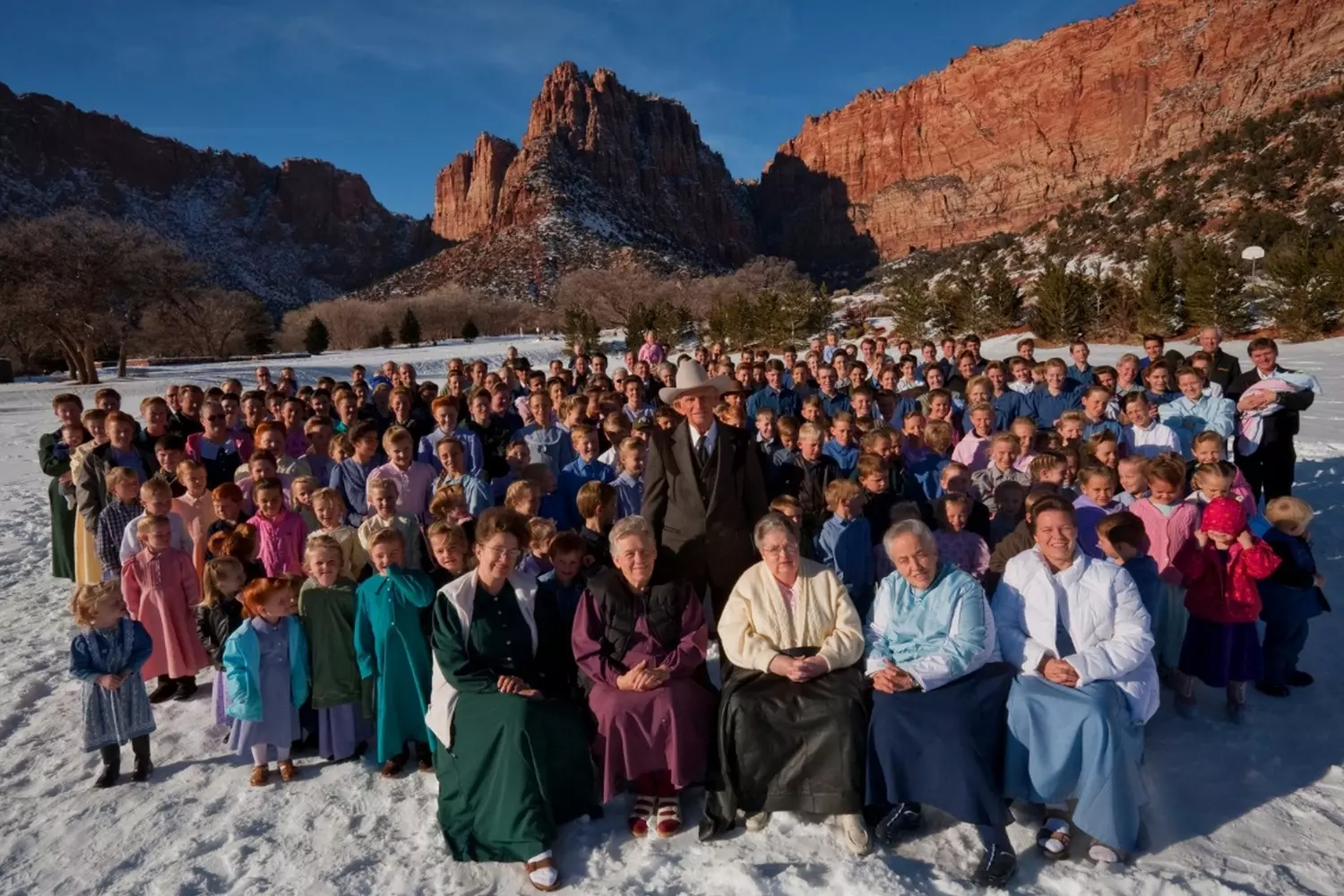
Criticism, Controversies, and Myths: The Dark Side of Mormon Reputation
A religion that is rapidly growing, becoming wealthy, building temples, and actively influencing the lives of millions will always raise questions. The Mormons are no exception. For decades, they have been surrounded by a cloud of criticism, stereotypes, and conspiracy myths. But where is the truth, and where are the exaggerations?
Polygamy among Mormons: origins, prohibitions, and echoes of the past
Polygamy is probably the most persistent and controversial myth associated with Mormons. Although the official Church of Jesus Christ of Latter-day Saints abandoned plural marriage more than a century ago, this topic continues to shadow the community. Why? Because its history is long, loud, and truly dramatic.
The idea of multiple marriages first appeared in the 1830s and 1840s as a personal initiative of Joseph Smith, the founder of the Mormon faith. According to him, he received a divine revelation that for achieving spiritual perfection and "increasing righteous posterity," a man could have several wives.
This principle later became known as the "law of plural marriage" or the "law of Abraham," referring to biblical patriarchs who also had more than one wife. In the Mormon interpretation, this was considered an act of obedience, spiritual growth, and service to God.
However, unlike ancient times, the newly formed plural families lived in industrial America of the 19th century, where such practices caused shock and rejection.
- From the 1840s to 1890, polygamy was officially permitted and even encouraged among leaders and active members of the Mormon church. On average, polygamists had 2 to 5 wives, but there were cases where men married dozens of women — for example, Brigham Young, the second president of the Church, reportedly had between 20 and 50 wives.
- Polygamy did not mean chaotic cohabitation — on the contrary, each such marriage was solemnized through a special sealing ritual in the temple, promising eternal union. Wives lived in different homes, managed households, and raised children. Sometimes men even set schedules for visiting their families.
- For women, such a life was often a trial: competition, emotional instability, financial difficulties. But some saw it as a sacrifice for faith and mission.
Government policy against the church: clash with the state
Since the early 1850s, the federal government of the United States began actively fighting polygamy, considering it barbaric and a threat to moral order. Laws were passed prohibiting plural marriage, stripping polygamists of civil rights, and threatening the Church itself with property confiscation.
By 1890, under pressure from laws, politicians, and the threat of church dissolution, then-president of the Mormon community Wilford Woodruff officially renounced polygamy by issuing the so-called "Manifesto." This was a turning point. From that moment, polygamy became a sin and a violation of church canons, and violators were subject to excommunication.
Today, the Church of Jesus Christ of Latter-day Saints strictly prohibits the practice of polygamy, emphasizing that it is no longer part of its doctrine. But this is where the confusion begins.
No matter how hard the Church of Jesus Christ of Latter-day Saints (LDS Church) tries to present itself as a modern and respected religious organization, the shadow of the past and entrenched structures continue to challenge its image. In recent years, media and public attention have again been drawn to scandals related to polygamy, strict control, and cases of sexual abuse, including shocking stories of child abuse.
Polygamy: officially banned but continuing in shadow groups
In the U.S., there are still breakaway fundamentalist groups that continue to practice and preach polygamy. The most famous among them is the Fundamentalist Church of Jesus Christ of Latter-Day Saints (FLDS), often mistakenly associated with the mainstream Mormon church.
- 01. The Warren Jeffs Case
One of the most high-profile cases was the arrest and conviction of FLDS leader Warren Jeffs. In 2007, he was found guilty of organizing marriages with underage girls, some as young as 12–14 years old. He had over 70 "wives", some of whom were his blood relatives.
Warren Jeffs was sentenced to life imprisonment plus 20 years but is still considered a prophet within the FLDS and runs the community from prison.
The Jeffs case became a symbol of extremism and abuse disguised as religion and sparked a wave of criticism toward all Mormon groups, even those officially distancing themselves from such practices. - 02. Closed communities and total control
Some fundamentalist settlements in Utah and Arizona effectively live by their own laws. There, women often cannot leave the community, and children receive education only within the sect. Rule violations are grounds for expulsion, and sometimes for religious "trials," where decisions are made opaquely and harshly.
Journalists and former members of such groups have reported physical abuse, labor exploitation, and sexual harassment. Women, especially young girls, may be forced into marriages with elderly men — supposedly "by God's will."
Scandals inside the "official" Mormon church
Although the LDS Church repeatedly emphasizes it has no relation to polygamy and condemns violence, there have also been high-profile cases of cover-ups within its ranks, especially related to pedophilia.
- 01. The "Helpline" program — help or cover-up?
In 2022, a scandal erupted when an investigative report by Associated Press revealed that a Mormon bishop in Arizona knew about years of abuse by a father against his own daughters but did not report it to authorities because he received instructions from the church's internal "hotline" for clergy — Helpline.
This hotline is positioned as a support tool for clergy but, as it turned out, primarily helps protect the church from legal risks rather than victims.
As a result, the abuse continued for years until police received an anonymous tip. The father was a repeat pedophile, and the bishop was under investigation for concealment. - 02. Documentaries and new testimonies
Modern media have played a big role in exposing and conveying the hidden side of Mormon structures to the wider public:
- "Keep Sweet: Pray and Obey" (Netflix, 2022)
A documentary series about the FLDS and Warren Jeffs. Horrifying footage, interviews with former "wives," an atmosphere of terror behind the facade of faith. - "Murder Among the Mormons" (Netflix, 2021)
A film about fraud, murders, and religious manipulations in the Mormon community of Salt Lake City in the 1980s.
These films sparked waves of reconsideration: where does faith end and abuse of power begin?
The LDS Church in recent years tries to respond openly but calmly. Their public statements emphasize:
- Condemnation of polygamy and violence.
- Support for investigations and cooperation with authorities.
- Promises to improve internal procedures to protect congregants.
However, critics insist that the church’s mechanisms are still not transparent enough, and the hierarchy interferes with fair proceedings.
Polygamy is an important but closed and condemned chapter in the history of the Mormon church. Yes, it happened. Yes, it shaped perceptions of Mormons for decades. But the modern Church has been fighting this legacy for more than a century and strives to emphasize its break from the past.
And the myth lives on — like all images where history mixes with guesses, fears, and human imagination.
Closed Temples and Accusations of Sectarian Secrecy
Mormon temples (not to be confused with regular meetinghouses) are special buildings where “sacraments” known as endowment ceremonies, family “sealings,” and baptisms for the dead take place.
They cannot be visited by outsiders, not even ordinary Mormons without a special recommend letter from church leadership. Only spiritually prepared members of the Church are allowed inside.
This gives rise to rumors:
- “They are hiding something.”
- “Strange rituals are performed there.”
- “It looks like a secret society.”
In reality, the ceremonies are strictly ritualistic but neither criminal nor mystical. They are aimed at eternal unions, vows of purity, loyalty, and service. Criticism of secrecy is understandable, but for Mormons, this is an element of religious discipline, not a conspiracy.
Control and Pressure: Where Is the Boundary of Freedom?
The Mormon church presupposes a strict hierarchy and control over the lives of believers. Regular meetings with spiritual mentors, reports on moral behavior, checks for compliance with the code of conduct (for example, abstaining from alcohol, honesty in dealings, participation in services).
Critics call this:
- “Spiritual paternalism,” where religious authority decides everything for the individual.
- “Moral surveillance,” which interferes with personal freedom.
- “Suppression of criticism” — those doubting the doctrine risk excommunication.
But on the other hand, for many Mormons this system is not a prison but a guarantee of stability and support, especially in times of crisis.
Missionary Work and Proselytism
Every young Mormon man (and many women) goes on a two-year missionary trip. White shirts, badges, bicycles — this has become a cultural symbol. But they are not always welcomed warmly.
Accusations include:
- Intrusiveness.
- Disrespect toward other religions.
- Deliberate exploitation of people’s social vulnerability for conversion.
However, Mormons themselves claim they only offer “good news” and never force anyone. In fact, missionaries operate within the law and with politeness, but the mass scale of this activity does create tension in some countries.
The Mormon church is a complex organism. Yes, with strict boundaries, historical contradictions, and traits of a closed community. But at the same time — with strong social cohesion, a desire for order, and a clear philosophy.
It is criticized — for discipline, rituals, influence. But these very traits also make it strong and resilient. And myths, as usual, arise where there is little information and many assumptions.

Sect or Not? Where Is the Line Drawn?
When it comes to Mormons, one of the most common questions is — "Is it a cult?" And here, it’s not so simple. The line between a “cult” and a “religion” is often blurred, especially when emotions, ignorance, societal fears, or… television come into play. Let’s try to understand calmly, without labels or myths.
Why Are Mormons Called a Cult?
- 01. Divergence from Traditional Christianity
The main reason Mormons are considered “outside the mainstream” is their theology. Unlike most Christian denominations, Mormons do not accept the classical understanding of the Trinity. For them, God the Father, Jesus Christ, and the Holy Ghost are three separate beings united only by purpose. This alone causes rejection by orthodox churches and forms the image of “heretics.” - 02. Historical Polygamy
The second stumbling block is polygamy, which was indeed once an official practice in the Mormon church. Although it was officially abandoned in 1890, the memory of plural marriage still leads to accusations of “cultishness.” - 03. Strict Hierarchy and Closed Nature
Mormons have a clear vertical power structure: at the top stands a living prophet, followed by the Council of the Twelve Apostles. All major decisions are made centrally. Access to temples is limited: only for the initiated and strictly by rules.
This structure seems suspiciously closed to many, and such closedness is automatically associated with a cult. - 04. Control and Involvement
A Mormon’s life is not just about Sunday church. It is a lifestyle: prayers, duties in the congregation, abstaining from caffeine and alcohol, tithing accountability, participation in the community.
An outsider might feel that Mormons are “too obedient,” and their lives are under surveillance.
And Why Is It Not a Cult — Officially?
The word “cult” has not only a colloquial but also a legal meaning. And here Mormons are above suspicion.
- 01. Recognition by States
The Church of Jesus Christ of Latter-day Saints is an officially registered religious organization. In the USA, it has been recognized as a religion since the 19th century, enjoys tax-exempt status, has the right to build temples, conduct missionary work, and own property. - 02. Scale and Infrastructure
Mormons have millions of followers worldwide, about 30,000 congregations, thousands of missionaries, educational institutions, charitable foundations, humanitarian missions. They have their own university (BYU), hospitals, archives, and even a Mormon choir known worldwide. - 03. Transparency and Accountability
Unlike closed cults, the Church of Latter-day Saints has a clear structure, public websites, publishes charity reports, and often interacts with the outside world: participates in public debates, maintains dialogue with other religions and authorities.
The term “cult” itself is problematic. In academia, it means a new or offshoot religious movement, but in everyday speech it has acquired a negative connotation — control, manipulation, isolation, and even danger.
So: Mormons are not an isolated radical group with a cult leader and a ban on the outside world. They are a religion, albeit an unusual one for the Christian world. But calling it a cult is more about expressing an attitude than objective reality.
Most modern researchers agree that the Mormon church left the “cult” stage by the mid-20th century and became a full-fledged religious system with its own theology, social structure, and history. Yes, it began as a “cult-like” movement within Protestantism but long ago outgrew that status. Today it is a new Christian tradition, like Adventists or Pentecostals.
Interestingly, in Europe Mormons are more often called a cult, while in the USA — almost never. Why? Because religious diversity is ingrained in the US, and Mormons’ status as “one of the American churches” is perceived naturally. Moreover, several US senators and governors have been Mormons, including Mitt Romney — a candidate for president.
Mormons are not a cult in the legal or sociological sense. But yes, they are a religion with characteristics that may seem strange or even frightening to those used to traditional Christianity.
So if someone calls them a cult, it’s worth asking: are they speaking about feelings — or facts?
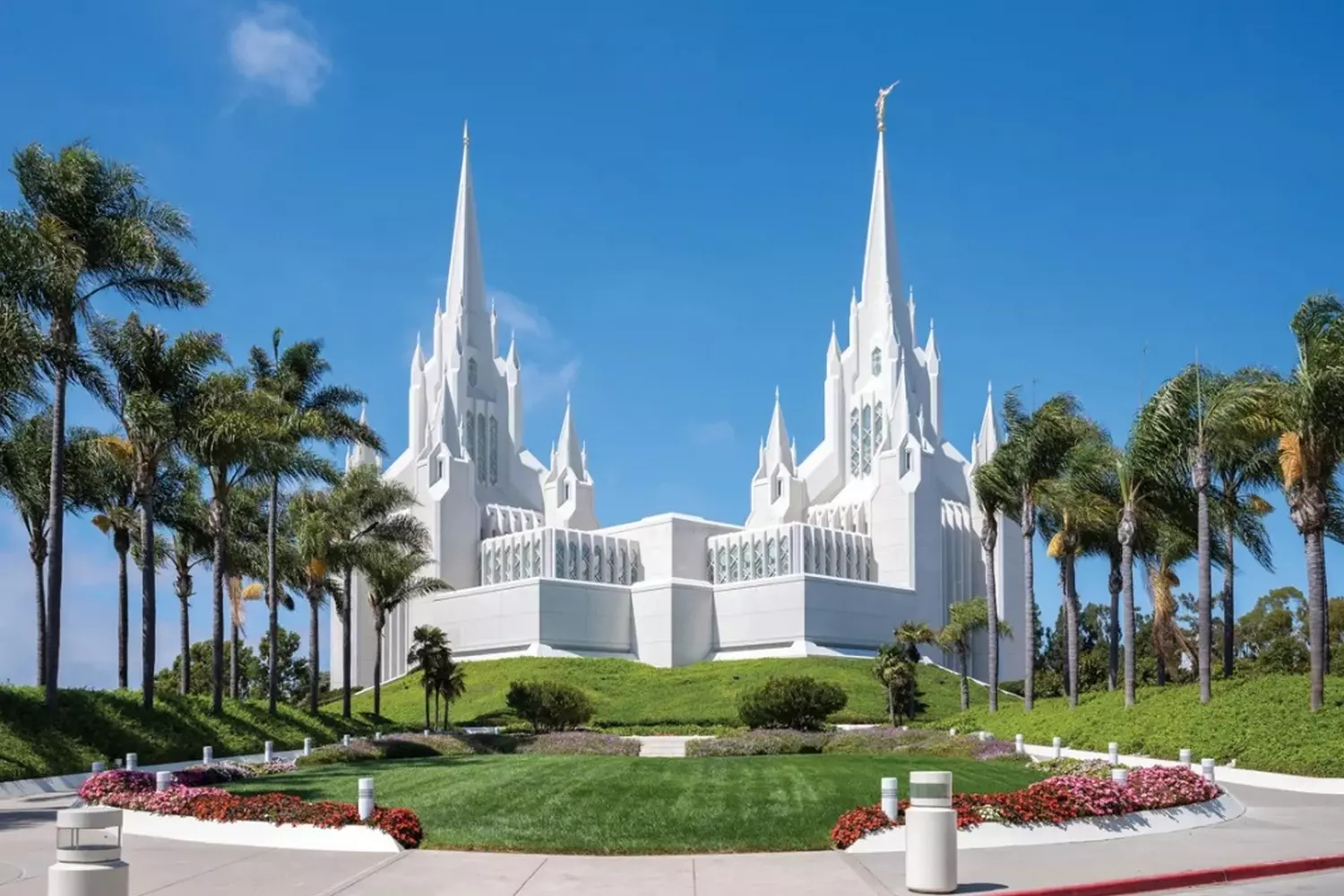
Mormons in Culture and Politics
At first glance, Mormons seem like a quiet, withdrawn religious group, distant from secular life and public affairs. But if you dig deeper — you’ll find them everywhere: in the Capitol, on television, on Broadway, in business, and even in pop culture. How did members of this unusual faith become part of the popular consciousness?
- 01. Politics: Mormons in Power
The name Mitt Romney is perhaps the most well-known in the political context when it comes to Mormons. He was the Governor of Massachusetts, ran for President of the USA in 2012 as a Republican candidate, and became a senator from the state of Utah.
Romney’s Mormon faith is not a hidden part of his biography but a component of his public image. He has often spoken about how his faith shaped his worldview, his attitude towards family, government, and duty. - 02. Utah: the Stronghold of Mormon Influence
The state of Utah is considered a political stronghold for Mormons. Here they make up the majority of the population, hold a significant portion of legislative seats, and shape social policy. Even the laws passed often reflect the moral values of Mormon tradition — for example, restrictions on alcohol sales or support for family programs. - 03. “South Park” — Provocation with a Taste of Humor
The cult animated series South Park has repeatedly mocked religious themes, and Mormons are no exception. In one episode, the entire Mormon family is portrayed as surprisingly friendly and idealized, in contrast to the rest of society, which itself became a satire on prejudice. Interestingly: the creators of “South Park” themselves grew up in Utah and are well acquainted with Mormon culture from the inside. Therefore, their jokes are both sharp and well-informed. - 04. “The Book of Mormon” — a Musical that Became a Phenomenon
In 2011, the musical “The Book of Mormon”, created by the same creators of “South Park” — Trey Parker and Matt Stone — premiered on Broadway. It is a satirical story about two Mormon missionaries in Uganda, full of dark humor, criticism of religious naivety, and absurdity.
Although the musical harshly mocks the faith, it is crafted with such artistry and skill that it won 9 Tony Awards and became one of the most successful musicals in history. Interestingly, the Mormon church did not protest but placed its own advertisement in the show program with the slogan: “You’ve seen the show. Now read the real Book of Mormon.” This is a reaction of a mature institution confident in itself. - 05. Architectural Symbol: the Temple in Salt Lake City
One of the most recognizable religious symbols of America is the main Mormon temple in Salt Lake City, Utah. It was built over 40 years (from 1853 to 1893) and became not just an architectural marvel but the sacred center of the entire church.
This temple is not open to the general public, which only fuels curiosity. From the outside, it resembles a fairy-tale castle, but inside, ceremonies take place where only Mormons who have received a “temple recommend” are admitted. The building has become so iconic that it appears in movies, postcards, books, and even video games. - 06. Mormons as a Cultural Phenomenon
In reality, Mormons have long ceased to be just a religious group. They are a cultural phenomenon with enormous influence. They have:
- Their own musical ensembles (for example, the Mormon Tabernacle Choir, which even performs at inaugurations),
- Influence in the film industry (many directors and screenwriters come from Utah),
- A strong business community (founders of JetBlue, Marriott, and other major companies are Mormons).
And although Mormons are still often mocked in comedy shows, they respond with calm confidence and facts.
Mormons are not just a religious community. They are a political force, a cultural symbol, a source of inspiration, and an object of satire. Their faith, despite its uniqueness, does not prevent them from being successful in business, participating in government, and even becoming Broadway stars.
Paradoxically, Mormons are among the few who manage to remain true to themselves while engaging in modern culture without conflict.
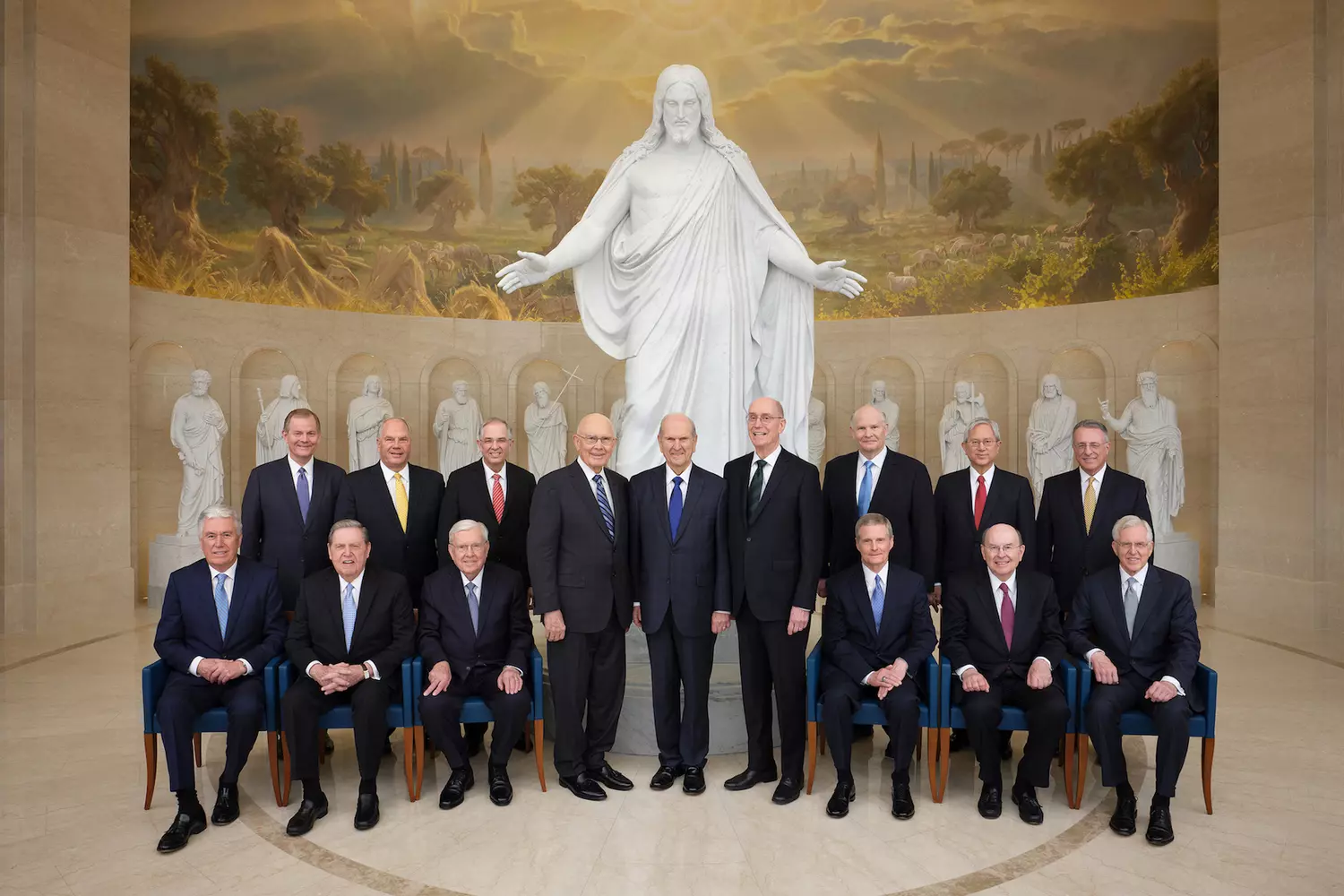
A Few Surprising Facts About Mormons You Didn’t Know
Mormons, or members of The Church of Jesus Christ of Latter-day Saints (LDS), are one of the most mysterious and widely discussed religious groups in the world. Their faith combines Christian traditions with unique teachings, and their way of life often raises questions. From secret temple rituals to a global network of missionaries — Mormonism has many unexpected aspects. Let’s explore what lies beyond the stereotypes!
- 01. Mormons believed in inhabitants of the Moon and the Sun
Early church leaders, including Brigham Young, claimed that there is life on the Sun and the Moon. These ideas were later revised, but they remain part of Mormonism’s curious history. - 02. A massive genealogical archive
Mormons actively study family trees to "baptize ancestors" posthumously. Their database FamilySearch is the largest in the world, with billions of records. - 03. Mormons are survival experts
The church encourages followers to keep a year’s supply of food in case of disasters. Many families store tons of canned goods, grains, and water. - 04. Ban on gambling, but their own casinos in Las Vegas
Mormons condemn gambling, yet the Clough family (prominent Mormons) owns the "The Orleans" casino in Las Vegas. The church officially does not comment on this paradox. - 05. "Saints" against the Scouts
Mormons sponsored Scout troops (almost 400,000 participants!) for 100 years but severed ties with the organization in 2020 due to disagreements over LGBT issues. - 06. Baptism of Hitler… and other dictators
In the 1990s it was revealed that Mormons had posthumously "baptized" Hitler, Stalin, and even serial killers. After the scandal, the church banned such rites for "controversial figures." - 07. Their own "FBI" — church security service
LDS has a private security service that investigates threats, monitors dissenters, and even cooperates with the FBI. - 08. Mormon astronauts and their stellar ambitions
Astronaut Don Lind, a Mormon, dreamed of consecrating the Moon during the "Apollo" mission. NASA did not allow it, but he left a copy of the Book of Mormon in space. - 09. Mormons and UFOs: secret doctrine
Apparently, some early Mormon leaders believed in inhabited worlds around other stars! Brigham Young claimed that God lives near the star Kolob (mentioned in the Book of Abraham). In the 1960s, Mormon UFO enthusiasts even formed a cult awaiting the arrival of aliens. - 10. The forbidden Mormon rap
In the 1990s, the group "The 3 Mormons" released an album of Mormon rap with tracks like "Word of Wisdom Rap" (about the prohibition on coffee). The church quickly distanced itself from the project. - 11. Mormon vampires from "Twilight"
The author of the cult saga Stephenie Meyer is a Mormon, and this is reflected in the books: vampires do not drink alcohol (like Mormons), and the Cullen family is "sealed forever" — a reference to a Mormon ordinance. - 12. "Saints" against Disney
In the 1970s, Mormons bought an island in Florida to build "Mormonland" — an alternative to Disneyland with biblical themes. The project was closed due to scandals. - 13. Mormon "ban" on beards
After the 1960s, men in church colleges and leadership positions were banned from wearing beards — to avoid association with hippies. Exception — if the beard grew during a mission. - 14. Cryptocurrency tithing
Since 2020, Mormons can pay tithing in bitcoins! The church created a special system to accept crypto donations. - 15. "Saving" Judas: the most controversial ordinance
It was recently revealed that Mormons repeatedly baptized Judas Iscariot (even after the ban on "scandalous" figures). The church stated this was a "volunteer error."
From cosmic theories to cryptocurrencies — Mormons continue to surprise the world. Their history proves that behind the facade of a conservative religion lies a whole universe of strange rituals, bold experiments, and unexpected cultural influences. Which of these facts do you find the most incredible?

Want to See America Through the Eyes of Mormons?
The Mormons are not just a religion, and certainly not a banal sect. They are a phenomenon with a unique system of faith, strict morals, and a strong internal culture. You can’t understand them without knowing the context — historical, social, and even political.
If you want to gain a deeper understanding of how America is shaped and what forces form it, the Mormons will give you the key to understanding this culture. And you can see it all with your own eyes on your next trip.
American Butler organizes exclusive tours to Utah and other regions where you can experience Mormon life from the inside. This is not just a tour — it’s a cultural immersion with guides who know the history, language, and contexts.














